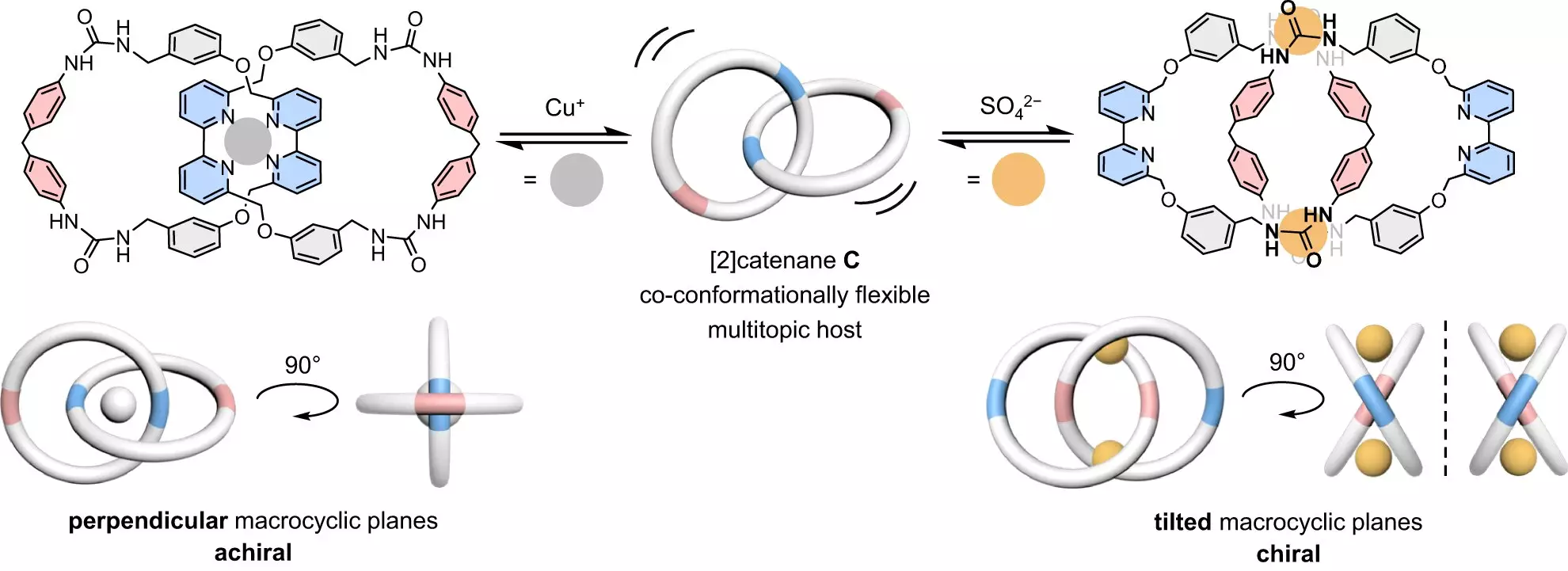In everyday life, we often overlook the remarkable engineering behind simple objects such as metal chains, handcuffs, and key rings. These items are not merely utilitarian; they exemplify a fascinating principle of design wherein rigid components can combine flexibility with strength. This very concept embodies the core of what catenanes represent in molecular chemistry. Catenanes are molecules made of intertwined, nano-sized rings, showcasing a unique balance of rigidity and adaptability. While the potential applications of such intricate molecular structures are tantalizingly vast, their synthesis remains a challenging endeavor, keeping many possibilities largely unexplored.
Breakthroughs in Synthesis
A recent breakthrough from a research team led by Professor Ho Yu Au-Yeung at the University of Hong Kong shines a light on the potentials of catenanes. This team successfully synthesized a catenane featuring two freely rotating rigid macrocycles, capable of selectively binding to both copper(I) cations and sulfate anions. This is not just an academic achievement; it marks a significant leap into how we can manipulate molecular structures to achieve specific, desired responses to environmental stimuli.
The discovery holds critical importance for fields like environmental monitoring and medical diagnostics. Detecting and distinguishing between specific ions is crucial, as it can help identify pollution sources or understand essential biological processes. The ability to interact with these differently charged ions—cations and anions—demonstrates a complexity and sophistication that is often absent in simpler binding agents.
Challenges of Dual Binding Sites
One might wonder, why is binding both cations and anions such a feat? The principle of electric charges helps elucidate this: similarly charged particles repel each other, while oppositely charged particles attract. Traditionally, designing a host molecule accommodating both types of ions appears counterintuitive. However, the ingenuity of Au-Yeung’s team lies in their design, which integrates binding sites for both the cation and anion within the interlocked rings of the catenane. The unique rotatory motion of the molecule enables it to adjust its configuration as needed. This transformative quality allows the catenane to act like a chameleon, adapting to different ion geometries—copper(I) being spherical and sulfate being tetrahedral.
The Biological Significance of Copper(I) and Sulfate Ions
Both copper(I) cations and sulfate anions are not only industrially relevant; they play indispensable roles in biological systems. Copper ions are vital for cellular respiration and enzymatic functions, while sulfate ions are involved in protein synthesis and cellular growth. The capability of the catenane to bind these ions strongly and selectively could revolutionize extraction techniques, enabling efficient recycling from environmental sources. Moreover, these molecular switches could catalyze new diagnostic advancements, allowing rapid analyses of essential ions in biological samples, from routine blood tests to more complex medical diagnostics.
Building the Future: More Than Just a Novelty
Professor Au-Yeung’s exploration does not stop here. His forward-looking vision suggests that there is much more to be harnessed from these molecular receptors. The team’s future work aims to develop catenanes that can simultaneously bind multiple cations and anions. This would not only broaden their scope of applications but could potentially lead to entirely new methodologies in fields like medicine, electronics, and environmental science.
In a world increasingly reliant on nuanced and sophisticated strategies for analyzing and manipulating chemical substances, the research into catenanes signals a paradigm shift. These molecules represent a bridge between nature’s design and human ingenuity, carving out new paths in our understanding and utilization of basic components that support life and environmental health.
The eagerness to explore catenanes reaffirms the power of fundamental research in addressing complex global issues. As we unlock the mysteries behind these molecular wonders, we may very well find solutions that contribute significantly to advancing technology and improving quality of life.

